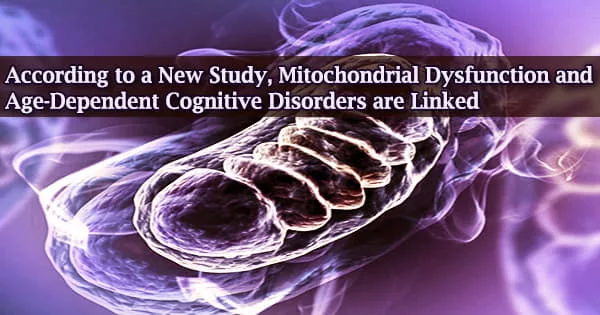Increased oxidative stress has been linked to neurological diseases like Alzheimer’s. Despite the fact that the pathophysiology of Alzheimer’s disease (AD) has been extensively studied, the likely link between mitochondrial malfunction and the disease remains largely unknown.
Prof. Koji Fukui of Japan’s Shibaura Institute of Technology led a study team that proved that oxidative brain damage is linked to AD progression and that it impairs cognitive function in AD transgenic mice in an age-dependent manner.
The mitochondrial electron transport chain, which creates reactive oxygen species (ROS) that attack tissue and cause oxidative damage, is essential for cellular processes to generate energy.
Mitochondrial malfunction and even cell death can result from this damage. Our brain is more prone to ROS damage than other organs since it consumes more oxygen.
According to research, ROS also produces amyloid- β (Aβ) buildup, which signals the development of Alzheimer’s disease (AD), a serious irreversible neurological condition. Treatments for Alzheimer’s disease do not halt the disease’s progression, necessitating the discovery of new drugs.
If mitochondria can be protected from ROS, mitochondrial function and cognitive function may be maintained. Future research should concentrate on developing diagnostic markers to detect early alterations in the brain, as well as exploring compounds with high antioxidant activity in mitochondria.
Prof. Koji Fukui
In a previous study, researchers discovered that oxidation levels in older rats with vitamin E deficiency were significantly higher than in younger rats. Furthermore, the generation of reactive oxygen species (ROS) by mitochondrial oxidation may harm brain cells, revealing a close relationship between Alzheimer’s disease and mitochondrial malfunction.
To further this understanding, the same group of researchers has recently shown that the progression of Alzheimer’s disease is tightly linked to oxidative brain damage. The study, led by Prof. Koji Fukui, along with his colleagues Mr Naoki Yoshida, Mr. Yugo Kato, and Prof. Hirokatsu Takatsu, was recently published in Biomedicines.
“We showed that oxidation negatively impacted the mitochondria which led to cognitive dysfunction,” explains Prof. Fukui, who is the corresponding author of the study.
The researchers employed three groups of AD mice, ranging in age from 3 to 20 months, as well as healthy controls. The mice were put through two well-known tests to assess their cognitive and coordination abilities: the Morris water maze and the Rota-rod test.
The AD mice took longer to achieve their maze goals but did not slow down, according to the researchers. The 6- and 20-month-old AD mice stayed on the Rota-rod for longer in the Rota-rod test, but the age-matched control mice fell faster.
Prof. Fukui explains, “The difference in fall time could be attributed to the weight difference between the two groups, as the control mice were heavier than the AD mice.”
These findings revealed that while AD mice were cognitively impaired, they did not have any impairments with coordination. The investigators obtained tissue samples from various areas of the brain from both groups of mice and analyzed the levels of oxidative markers in the samples to determine which AD-related proteins were responsible for such cognitive impairment.
To begin, they discovered that AD mice had higher amounts of Aβ, which increased with age. The AD-related protein Aβ1-42 was found to be substantially greater in the hippocampus than in other areas of the brain, which surprised them.
They did not observe any changes in tau protein levels, which is another indication that accumulates in Alzheimer’s disease pathology.
Overall, Aβ1-42 aggregation in the hippocampus was found to produce cognitive impairment in AD animals. The team also hypothesized that ROS-induced mitochondrial damage was linked to neuron survival.
They tested the levels of many important mitochondrial oxidative enzymes, including nicotinamide-nucleotide adenylyltransferase (NMNAT)-3, which has anti-aging properties. While NMNAT-3 was found to be lowered, levels of 3-NT (3-nitrotyrosine), an indicator of higher oxidation, increased with age in AD mice.
“With reduced levels of NMNAT-3 and higher levels of 3-NT, it is evident that oxidation causes mitochondrial dysfunction, and eventually leads to cognitive dysfunction,” comments Prof. Fukui.
The researchers are upbeat about the implications of their findings, especially in terms of increasing the intake of antioxidant chemicals that can assist our bodies combat ROS. Many natural antioxidants, such as vitamins E and C, can really be obtained from diet.
Prof. Fukui concludes by surmising, “If mitochondria can be protected from ROS, mitochondrial function and cognitive function may be maintained. Future research should concentrate on developing diagnostic markers to detect early alterations in the brain, as well as exploring compounds with high antioxidant activity in mitochondria.”





